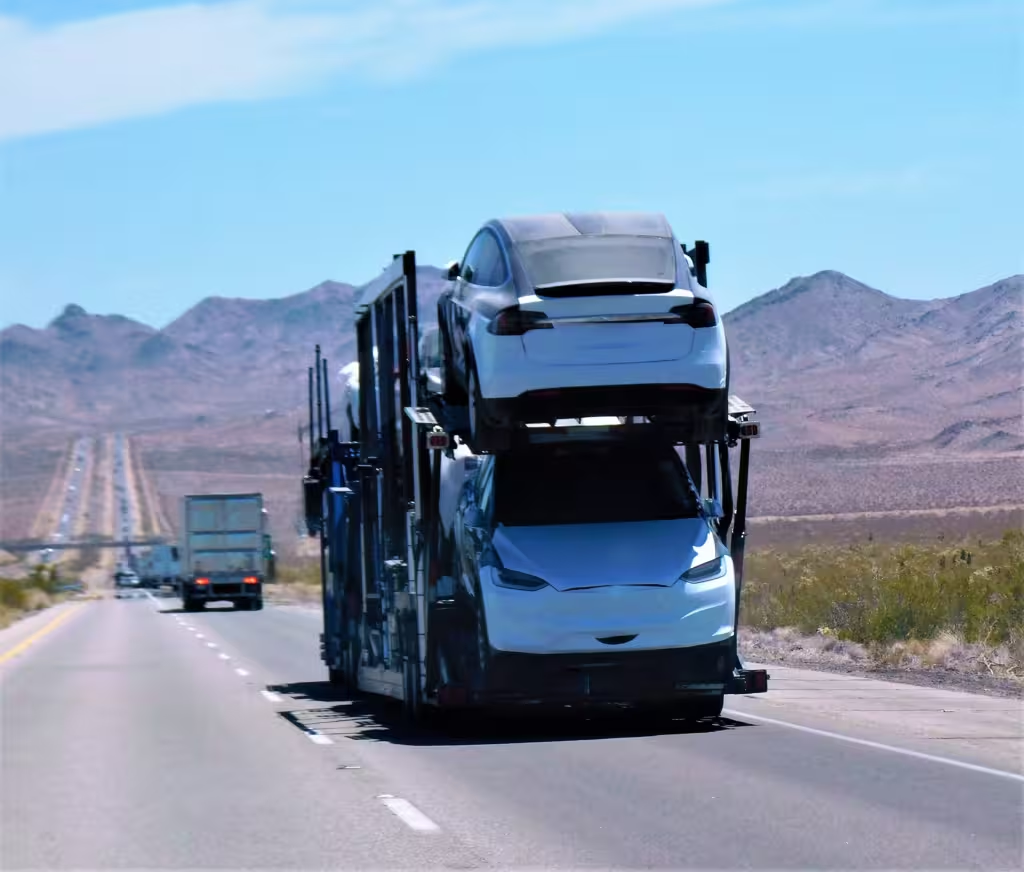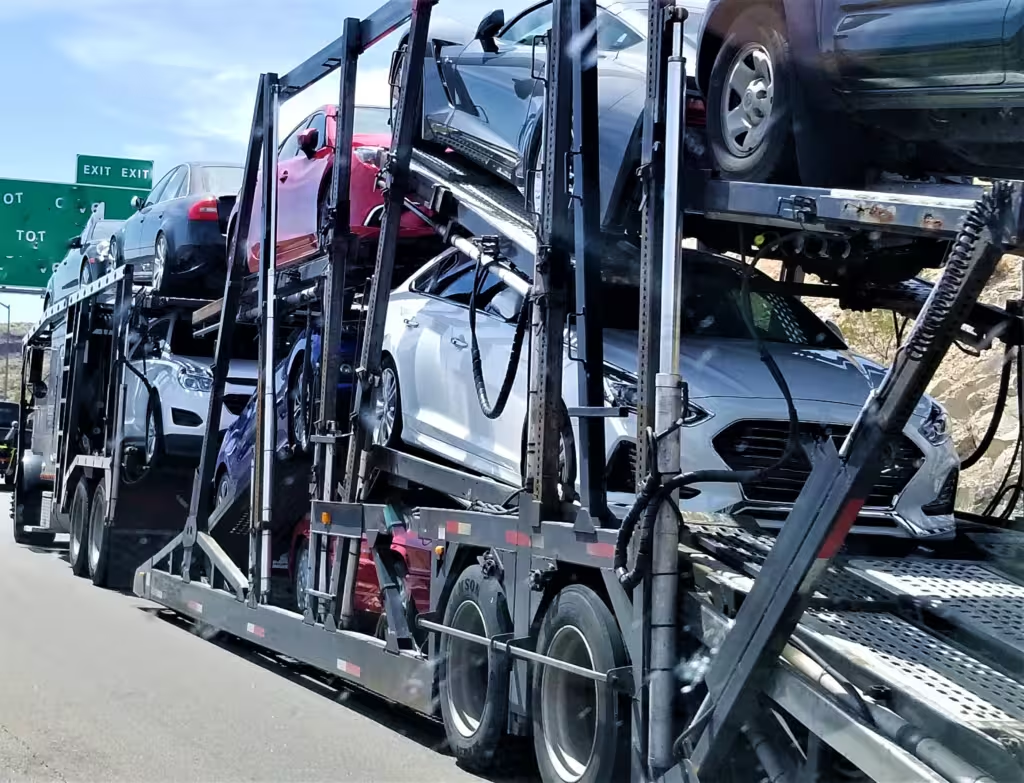
Open car shipping is one of the most popular methods for transporting vehicles across the United States, known for its cost-effectiveness and wide availability. Whether you’re relocating, buying a car online, or sending a vehicle to a loved one, understanding the costs associated with open car shipping can help you make an informed decision.
In this article, we’ll explore what factors influence the cost of open car shipping, from the type of vehicle you’re transporting to the distance it needs to travel. We’ll also provide average cost estimates, tips for saving money, and a comparison of open versus enclosed shipping. By the end of this guide, you’ll have a clear understanding of what to expect when choosing open car shipping, ensuring that you can secure the best possible deal for your needs.
Summary
What is Open Car Shipping?
Open car shipping is the most widely used method for transporting vehicles across the country. This method involves loading vehicles onto an open trailer, typically a multi-car carrier, where they are transported to their destination. The trailer is “open” in the sense that the vehicles are exposed to the elements, as opposed to enclosed shipping, where vehicles are fully covered and protected.
A. How Open Car Shipping Works
In open car shipping, vehicles are loaded onto a large trailer, often capable of carrying anywhere from 7 to 10 cars at once. The process begins with the carrier picking up your vehicle from a specified location. The car is then driven onto the trailer and secured in place using chains or wheel straps to prevent movement during transport.
Once all vehicles are loaded, the driver sets off along a predetermined route to the destination. The journey can vary in length depending on the distance, road conditions, and weather. Upon arrival, the vehicles are unloaded and delivered either directly to the customer’s doorstep or a nearby terminal, depending on the terms agreed upon.
B. Pros and Cons of Open Car Shipping
Pros:
- Affordability: Open car shipping is the most cost-effective option for transporting vehicles, primarily because the trailers can carry multiple cars at once, spreading the cost among several customers.
- Availability: Because it’s the most common method, it’s easier to find carriers and schedule shipments with open transport.
- Efficiency: Open car shipping is generally faster, as the higher availability of carriers and the ease of loading/unloading vehicles contribute to quicker turnarounds.
Cons:
- Exposure to Elements: The primary drawback is that your vehicle is exposed to weather conditions, road debris, and potential damage from external factors. While damage is rare, it’s a possibility to consider.
- Less Protection: Compared to enclosed shipping, open transport offers less protection, which might be a concern for luxury, vintage, or highly valuable cars.
Factors Influencing the Cost of Open Car Shipping
The cost of open car shipping can vary widely depending on several key factors. Understanding these elements will help you anticipate costs and make informed decisions when planning to ship your vehicle. Below, we’ll break down the primary factors that influence the price of open car shipping.
A. Distance and Route
Distance: One of the most significant factors in determining the cost of open car shipping is the distance between the pickup and delivery locations. Generally, the farther your vehicle needs to travel, the higher the shipping cost. However, the cost per mile often decreases with longer distances, meaning that a cross-country shipment may be more cost-effective on a per-mile basis than a shorter regional trip.
Route: The specific route also plays a crucial role. Major highways and well-traveled routes tend to be less expensive due to higher carrier availability and more efficient logistics. Conversely, remote or rural areas might incur higher costs because carriers need to deviate from their standard routes, leading to increased travel time and fuel consumption.
B. Vehicle Type and Condition
Vehicle Size and Weight: Larger and heavier vehicles, such as SUVs, trucks, or vans, generally cost more to ship than smaller, lighter vehicles like sedans or compact cars. This is because larger vehicles take up more space on the carrier and may require special handling.
Vehicle Condition: The condition of the vehicle also affects the cost. If your car is inoperable, it may require special equipment like a winch to load and unload it from the carrier, which can add to the overall cost. Operable vehicles are easier and less expensive to transport.
C. Time of Year and Market Demand
Seasonality: The time of year can significantly impact shipping costs. During peak seasons, such as summer and early fall when many people are relocating or taking extended vacations, demand for car shipping services increases, leading to higher prices. In contrast, the winter months may see a decrease in demand, potentially lowering costs, although winter weather can also introduce delays and additional risks.
Market Demand: Beyond seasonal fluctuations, broader market trends can affect costs. For instance, spikes in fuel prices can lead to higher shipping car cost as carriers pass on these costs to customers. Additionally, during times of high demand, such as when many people are moving at the same time, prices can increase due to limited availability of carriers.
Average Cost Estimates for Open Car Shipping
When planning to ship your car using open transport, it’s important to have a clear understanding of the potential costs involved. While prices can fluctuate based on the factors discussed earlier, there are general cost ranges you can expect depending on the distance and type of vehicle.
A. Short-Distance Shipping Costs
Overview: For short-distance shipments, typically under 500 miles, the cost of open car shipping can vary based on proximity to major cities and the specific route. On average, you can expect to pay between $200 and $500 for such distances. For example, transporting a standard sedan from Los Angeles to San Francisco (approximately 380 miles) might cost around $300, assuming no additional complications or special requirements.
Factors to Consider: Keep in mind that shorter routes are often less cost-efficient on a per-mile basis, as carriers still incur significant fixed costs like fuel and labor. Additionally, if your route includes less populated or remote areas, you may see a higher price due to the lack of available carriers.
B. Long-Distance Shipping Costs
Overview: For long-distance shipments, such as cross-country transport exceeding 1,500 miles, costs can range from $800 to $1,500 or more, depending on the vehicle type and route. For instance, shipping a mid-size SUV from New York to Los Angeles, a distance of about 2,800 miles, might cost approximately $1,200. The cost per mile decreases with longer distances, making long-distance shipping more cost-effective overall.
Factors to Consider: The price for long-distance shipping is influenced by the route’s popularity, the season, and potential fuel surcharges. For example, a route that includes several major cities might be less expensive than a route passing through more rural areas, where fewer carriers operate.
Special Considerations: If you’re shipping a larger vehicle, or if your car requires special handling due to its condition, these factors can add to the overall cost. Additionally, expedited shipping or specific delivery windows can increase the price.
How to Save Money on Open Car Shipping
While open car shipping is already one of the most cost-effective ways to transport a vehicle, there are several strategies you can employ to further reduce costs. From timing your shipment strategically to choosing the right carrier, these tips can help you get the best deal possible.
A. Tips for Getting the Best Quotes
Compare Multiple Quotes: One of the simplest ways to save money is to compare quotes from different car shipping companies. Prices can vary significantly between providers, so gathering several quotes allows you to find the most competitive rate. Be sure to consider not just the price, but also the reputation and reliability of the carriers.
Book Early: Planning ahead can often result in lower prices. Booking your shipment at least a few weeks in advance gives you more options and can help you secure better rates before the peak season or last-minute rush.
Be Flexible with Dates: If your schedule allows, being flexible with your pickup and delivery dates can also help reduce costs. Carriers may offer discounts for filling empty spots on their trucks, especially if they’re already planning a route along your desired path.
Check for Discounts: Some companies offer discounts for various reasons, such as military service, student status, or shipping multiple vehicles at once. Always inquire about any potential discounts that could apply to your situation.
B. Case Study: Saving on Open Car Shipping
Background: A customer named Sarah needed to ship her compact car from Chicago to Dallas. After receiving several quotes ranging from $700 to $1,000, she decided to implement a few cost-saving strategies.
Approach: Sarah booked her shipment six weeks in advance, allowing her to choose from a wide range of carriers. She also opted for terminal-to-terminal shipping, which required her to drop off her car at a terminal in Chicago and pick it up at a terminal in Dallas. Additionally, she was flexible with her delivery date, allowing the carrier to fit her car into their existing route.
Outcome: By following these strategies, Sarah was able to secure a rate of $650, well below the initial quotes she received. Her vehicle was delivered safely and on time, and she saved money by being proactive and flexible.

Why Choose Open Car Shipping?
Open car shipping is the most popular method for vehicle transport in the U.S. because it offers a balance of affordability, convenience, and reliability. For most car owners, this method provides the best value, especially when cost is a primary concern. In this section, we’ll explore why open car shipping might be the right choice for you and how it compares to other options.
A. Comparing Open vs. Enclosed Car Shipping
Cost Comparison: The most significant difference between open and enclosed car shipping is the cost. Open car shipping is typically 30-50% less expensive than enclosed shipping. This makes it an attractive option for most vehicles, especially for standard cars, trucks, and SUVs that don’t require extra protection.
Protection Levels: While enclosed shipping provides maximum protection by shielding your vehicle from the elements and road debris, open shipping offers adequate protection for most vehicles. Although your car is exposed to weather conditions and potential road debris, the risk of damage is minimal. For everyday vehicles, the savings often outweigh the small risk of exposure.
Availability: Open car carriers are far more common than enclosed carriers, which means it’s easier to find a carrier for your specific route and schedule. This higher availability also translates to faster shipping times, as there’s less waiting for a spot on a truck.
When to Choose Enclosed Shipping: Enclosed shipping is ideal for luxury cars, classic vehicles, or any car that requires extra protection due to its value or condition. However, for the average car owner, open shipping offers a cost-effective solution that meets most needs.
B. Customer Testimonials and Success Stories
Testimonial 1: “I shipped my car from Florida to Texas using open transport, and the experience was fantastic. The price was affordable, and my car arrived in perfect condition. I was initially worried about it being exposed during the trip, but the carrier reassured me, and everything went smoothly. I’d definitely recommend open car shipping to anyone looking for a budget-friendly option.” – Mark R., Houston, TX
Testimonial 2: “I needed to transport my sedan across the country and was on a tight budget. Open car shipping was the best choice. The process was easy, and the carrier communicated well throughout the journey. My car arrived on time and without any issues. I saved a lot compared to enclosed shipping, and I would use this service again.” – Sarah L., Los Angeles, CA
Success Story: A local dealership in Georgia needed to move several vehicles to their new location in New York. By opting for open car shipping, they managed to transport all the cars safely while keeping their expenses within budget. The dealership praised the efficiency and reliability of the service, highlighting that it allowed them to complete the move without stretching their resources.
Ready to Ship Your Car? If you’re considering open car shipping for your vehicle, now is the time to get a personalized quote. Fill out the form below to receive a tailored estimate based on your specific needs and circumstances. Our team is here to provide you with all the information you need and assist you through the shipping process.
Share Your Experience: Have you used open car shipping before? Share your experiences or ask any questions in the comments below which method do you prefer open car transport or enclosed auto transport.

